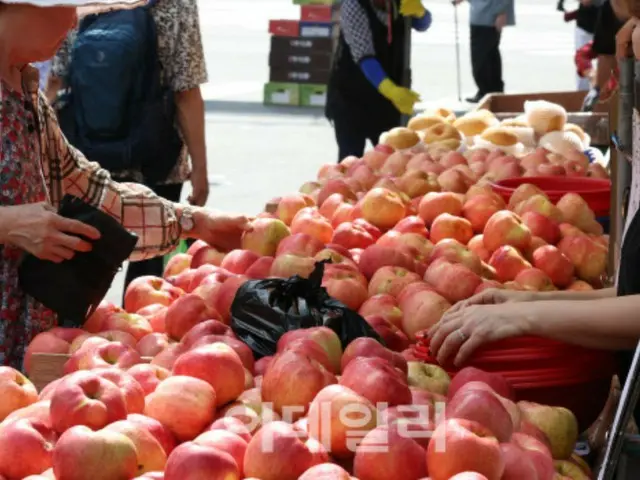Kim said, ``Since last year's Mid-Autumn Celebration (Chuseok, Mid-Autumn Festival), apples that have been so expensive that I can't eat them now cost easily over 5,000 won per piece, and strawberries that are in season are also more expensive than a month ago. "It seems like that"
``Even if I don't do that, prices are going up and shopping is difficult, so I don't feel like buying fruit,'' he said. Kim is not alone in this problem. Recently, internet cafes have become popular in the neighborhood.
There are questions about where and how to buy things cheaply. In addition to apples, whose prices have skyrocketed since September last year, prices of oranges and strawberries, which are now in season, have also skyrocketed.
Exchanging information that can help people is becoming a trend. According to the agricultural product distribution survey conducted by the Korea Agricultural and Fisheries Food Distribution Corporation (aT) on the 5th, the retail price of 10 apples was 28,600 as of the 4th.
The price was 99 won, 29.1% higher than a year ago (22,219 won). The price of 10 pears was also 44,303 won, 33.3% higher than a year ago (25,746 won).
Other items that also soared include △citrus fruits by 29.4%, △strawberries by 7%, and tomatoes by 22%. Production of apples and pears has significantly decreased by approximately 27-30% due to damage caused by pests and a cold summer last year, leading to a decline in prices.
The rank has risen. Strawberry production also decreased due to the intense heat and heavy rain. Although the production volume of mandarin oranges has not changed, the price of other fruits has increased and the demand for mandarin oranges has increased, leading to a rise in demand.
The problem is that prices for these fruits will remain high for some time. Unlike vegetables, which have a short growing period of 2 to 3 months, fruits grow only once a year.
The price will not fall easily because it will be supplied at a fixed price. Also, with Lunar New Year just a month away, demand for fruit is expected to increase further.
In this way, it is possible that the overall consumer price inflation rate may increase while fruit prices remain at a high level.
. In fact, consumer prices in December last year increased by 3.2% compared to the same month last year, of which 0.3% was due to fruit prices. By item △ Apples 54.4% △ Pears 33.2% △ Tomatoes 45.8% △ Ichi
This is because most fruits recorded double-digit increases, including 23.2% for oranges, 20.9% for oranges, and 17.8% for grapes. In response, the government applied significant tariffs on imported fruit, and
The company also plans to increase shipments of fruit, which has been used for industrial purposes. Based on the ``2024 Economic Policy Direction'' announced the day before, the Basic Materials Department will spend 135.1 billion won for 21 types of imported fruits in the first half of the year.
It was announced that Bell's tariff quotas would be applied. The Ministry of Agriculture and Food will check the supply and demand and price trends of major items every day, and will bring the maximum amount of contracted crops to the market before the Lunar New Year, and will also ship atypical and small-sized crops. price
Fruits whose prices have soared will be included in the agricultural and livestock products discount support project, which will reduce prices by up to 20 to 30%. An official from the Ministry of Planning and Finance said, ``Basically, there is a shortage of apples, pears, and other crops.
Until then, there will be no additional supply, and we will have no choice but to supply the preserved fruit.'' He added, ``Apply tariff quotas to replace some fruit demand with imported products, increase supply through atypical methods, and use price discount policies to increase supply.''
We will make efforts to achieve sustainable price stability."
2024/01/07 15:12 KST
Copyrights(C) Edaily wowkorea.jp 91

